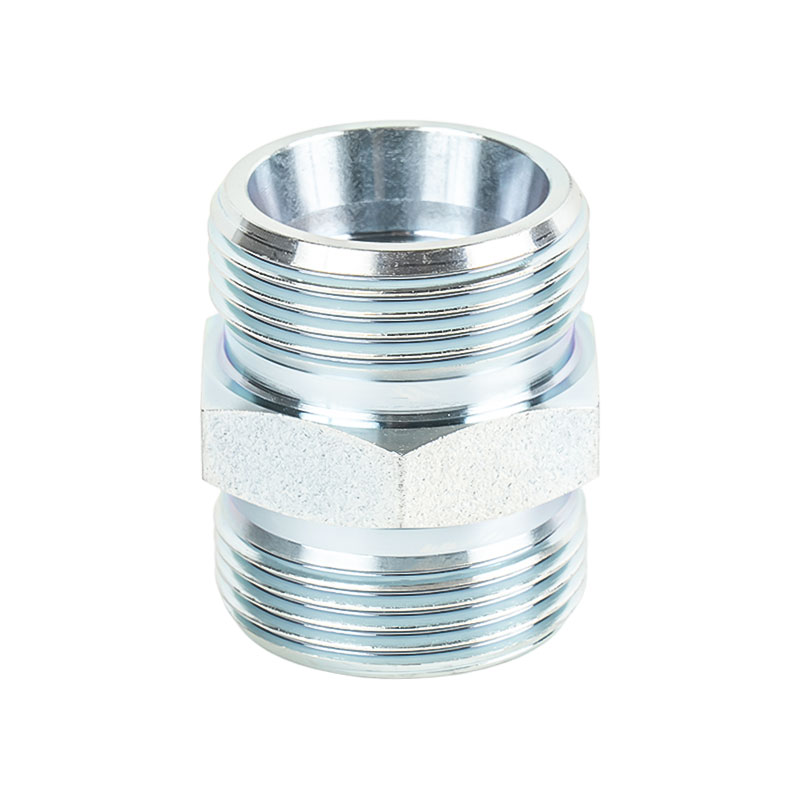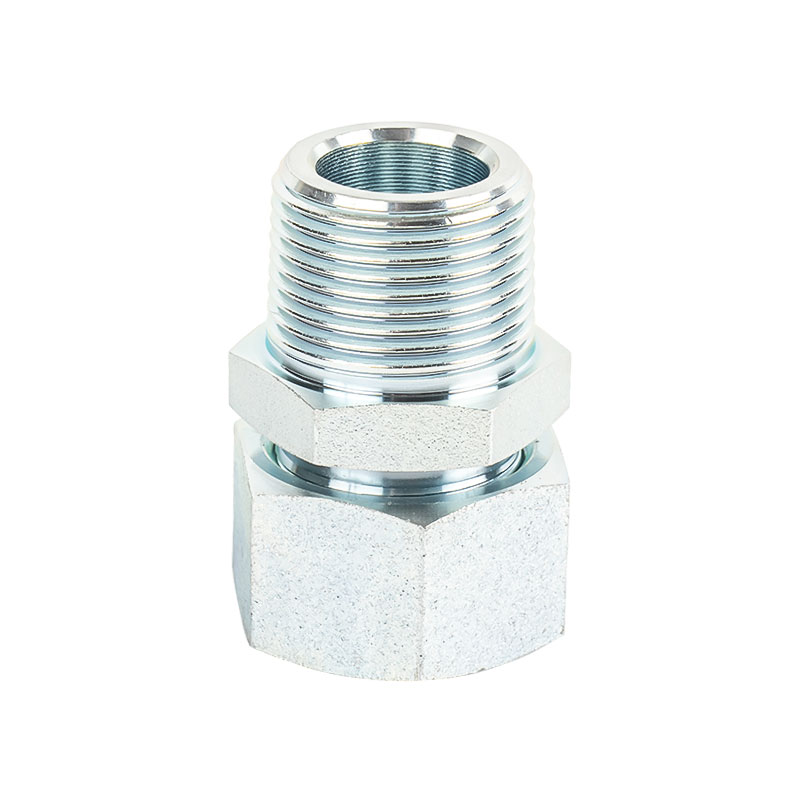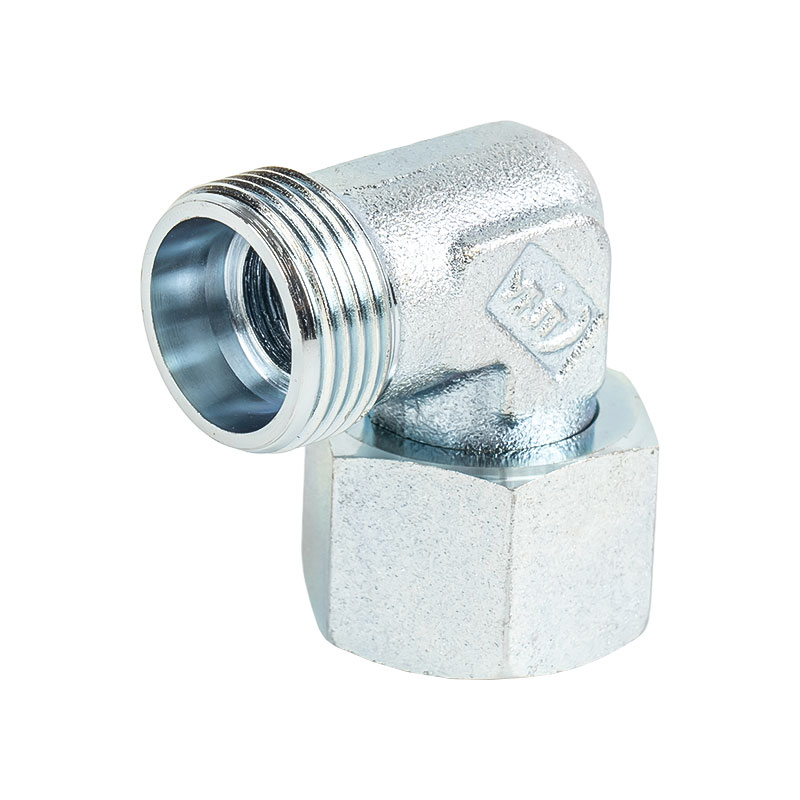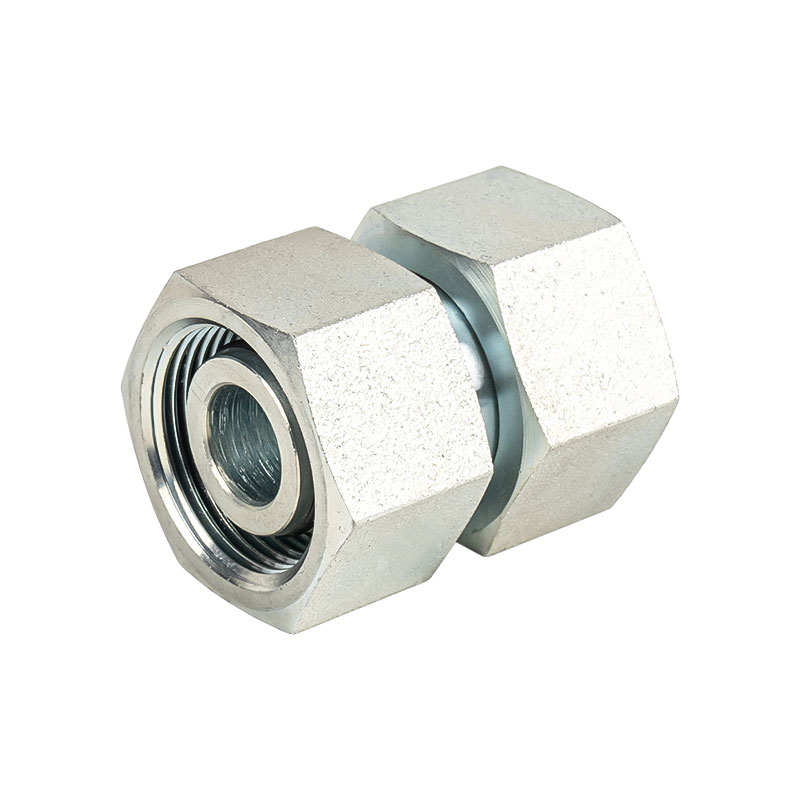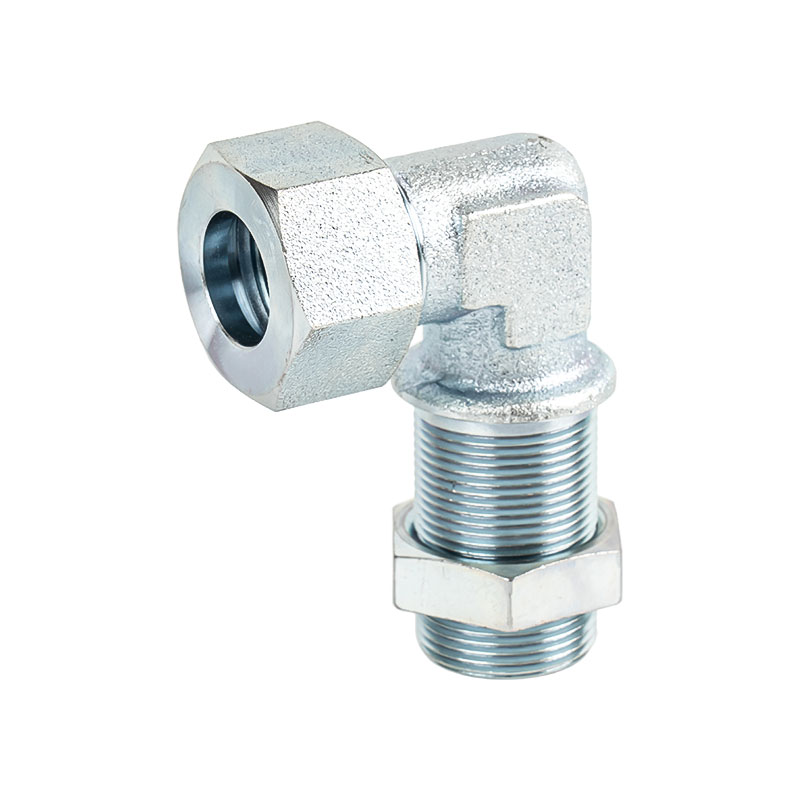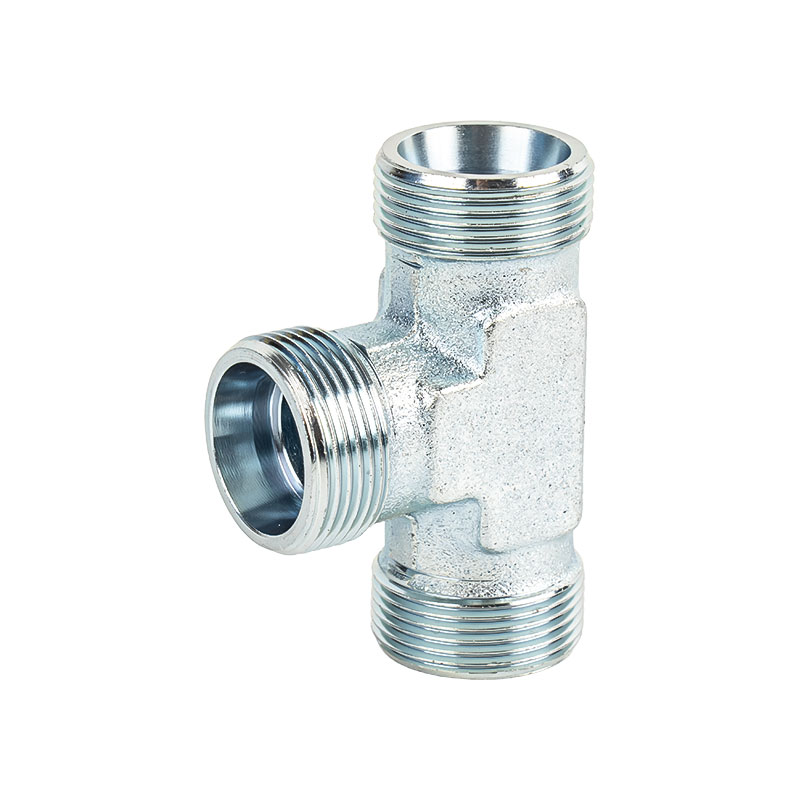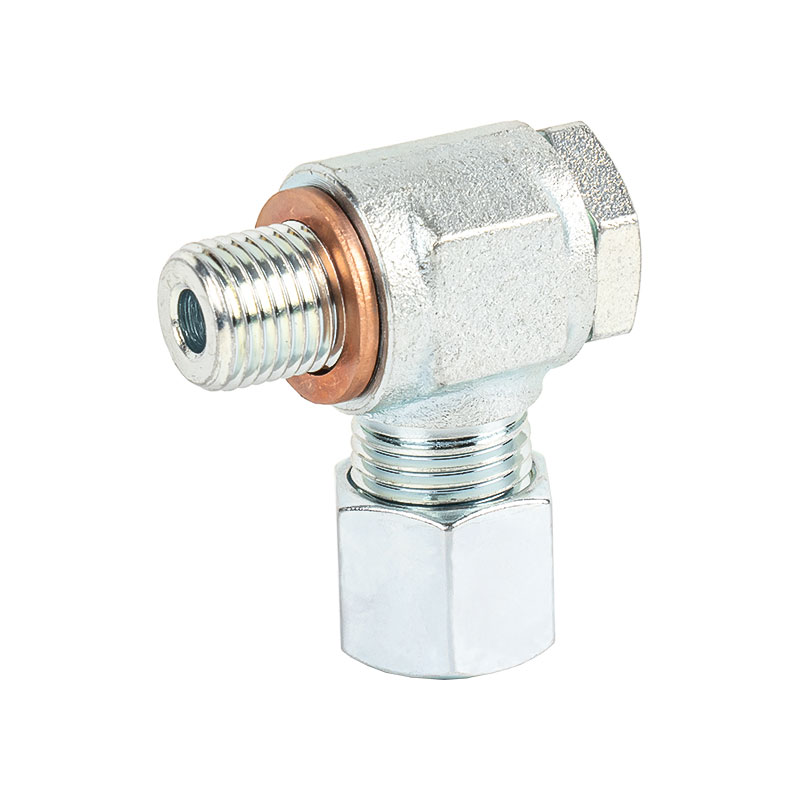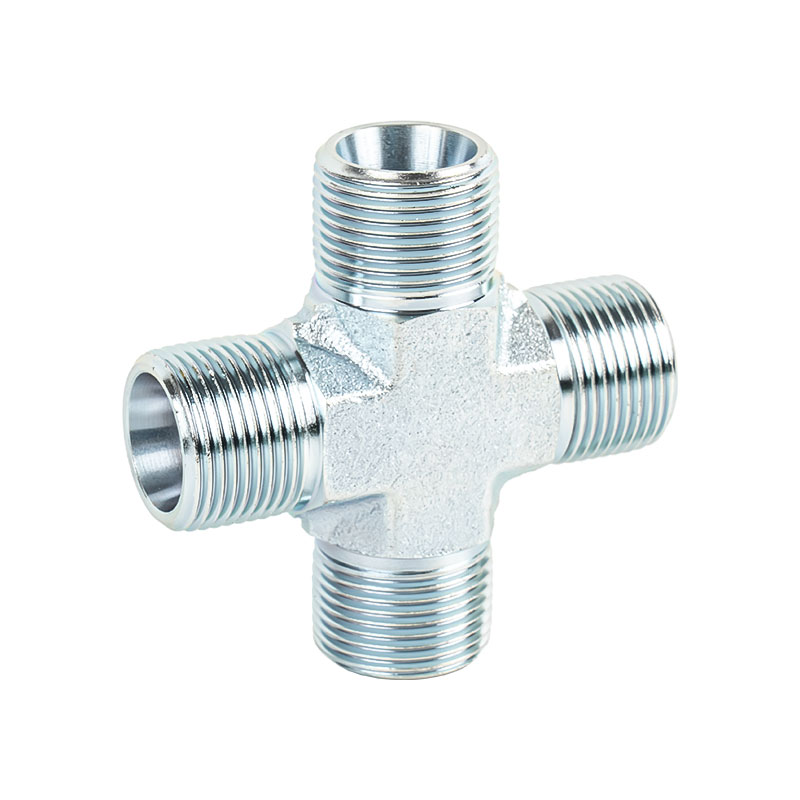Threaded connection method
Threaded connection is a common connection method between hydraulic hoses and fittings, and is widely used in a variety of industrial hydraulic systems. This method relies on the rotation and tightening of the thread itself to achieve connection, and has the characteristics of simple structure and easy disassembly. Common thread standards include British thread (BSP), American thread (NPT), metric thread (M series) and other special specifications such as UNF and JIC. Threads of different standards have different sealing structures, angles and pitches. When selecting, they should be matched with the hose structure, system pressure and sealing requirements.
Ferrule connection method
Flange-type fittings are sealed and fixed by pressing the metal ferrule to embed it into the outer wall of the hose. This method is suitable for the connection between metal pipelines and some high-pressure rubber or plastic hoses. It has the characteristics of no welding, easy installation and repeatable disassembly. The sealing performance of the ferrule connection mainly depends on the matching accuracy of the ferrule and the hose, as well as the tightening degree of the nut. When using, make sure that the ferrule is installed correctly, otherwise it is easy to leak or pull off.
Crimp connection method
Crimp connection is a method of using hydraulic crimping equipment to firmly press the tail of the fitting on the hose. Hose fittings generally have a barb structure, with a metal sleeve on the outside. The fitting and sleeve are pressed against the outer wall of the hose by a special crimping machine to achieve the dual functions of mechanical fixation and hydraulic sealing. This connection method is suitable for hydraulic systems under high pressure or pulsating conditions. It is highly firm and not easy to loosen, but it is usually a one-time connection and cannot be reused after disassembly.
Flange connection method
Flange connection fixes the hose fitting to the flange connection surface by bolts, which is common in large-diameter or high-pressure hydraulic systems. Flange forms can be divided into split type, integral type, welding type, etc., and sealing gaskets or O-rings are required to ensure sealing when used. Compared with other methods, flange connection is more suitable for occasions with large pipe diameters or limited assembly space. Due to its relatively stable structure and strong vibration resistance, it is often used in environments such as engineering machinery and hydraulic power equipment.
Quick fitting connection method
Quick fittings are suitable for occasions where hoses need to be frequently disassembled and assembled. This connection method can be connected and disconnected by plugging or rotating the mechanism, without the need for tools, saving operation time. Quick fittings usually have an automatic locking mechanism built in and a sealing structure to prevent medium leakage. It is suitable for hydraulic working conditions with relatively low pressure or flexible switching, but special attention should be paid to the sealing reliability and durability under long-term high-pressure use.
Plug-in connection method
The plug-in connection method has a simple structure. The hose fitting is inserted into the matching fitting hole, and the connection is completed by tight matching tolerance and sealing ring. This method is mostly used in low-pressure or temporary pipeline systems. It is quick to connect and easy to replace, but its sealing performance and pressure resistance level are relatively limited. It is suitable for hydraulic circuits or auxiliary systems with low requirements.
Welding connection method
The welding connection method is generally used for the connection between the fitting end and the metal pipe body. The fitting is fixed by welding to improve the overall strength. The hose part is still connected by ferrules, buckles or flanges. This method is often used in hydraulic systems with high strength requirements or high temperature and high pressure environments. Welding connections must be performed by qualified operators to ensure that the welds are leak-free and non-deformed.
Considerations for matching sealing structure and connection
Different connection methods need to match appropriate sealing structures. Common ones include cone seals, O-ring seals, flat seals, spherical seals, etc. When selecting the connection type, it is necessary to consider the working pressure of the hydraulic system, the medium used, the ambient temperature, the vibration frequency and other factors. If the sealing structure does not match the connection type, it may cause leakage or damage during long-term use.

 中文简体
中文简体